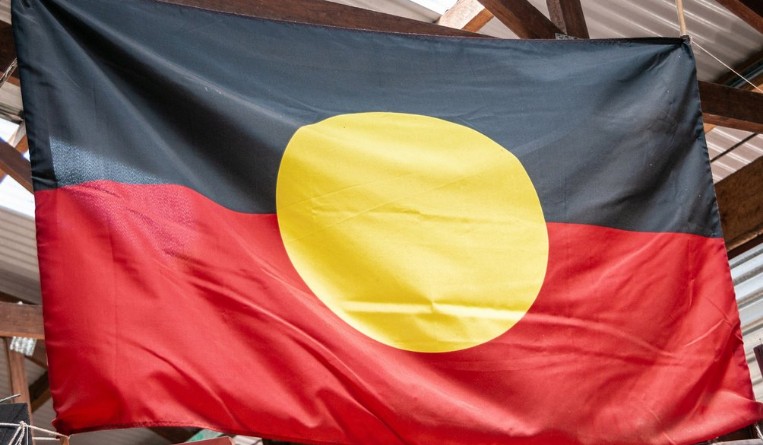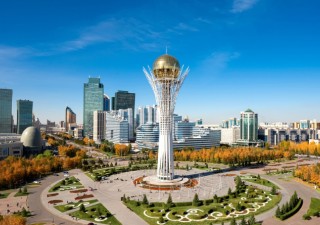Copyright transfer hoists Australian Aboriginal Flag proud and free, with no strings attached
04 February 2022

The Australian Aboriginal Flag, one of Australia’s official flags, may now be used by all Australians on websites, artworks, clothing items including sports uniforms and sporting venues, digitally or otherwise, for free and without seeking permission from anyone.
This development comes following a A$20 (US$14) million deal between the Australian government and Harold Thomas, designer of the flag and the first aborigine to graduate from an Australian art school. The deal sealed the transfer of copyright ownership from Thomas to the Commonwealth of Australia, allowing the Aboriginal Flag to be used by anyone for free.

“This should resolve the public's confusion over use of the flag under the previous licensing arrangements, which led to controversy when the former exclusive licensee, WAM Clothing, a non-indigenous company, sought to prevent the use of the Aboriginal Flag on clothing worn by sports teams,” said Joanna Lawrence, counsel at Ashurst in Melbourne.
The Australian Football League declined to participate in a commercial agreement involving the painting of the flag in center circles and the printing of the flag’s image on club jumpers during Indigenous Round matches. The players did not approve the idea of entering into the agreement if other indigenous Australians were prohibited from doing the same under the exclusive license.
Queensland-based WAM Clothing also issued infringement notices to the National Rugby League, a major club competition in Australia and New Zealand, as well as to apparel companies including Clothing the Gap, a small “profit for purpose” enterprise. Owned by Laura Thompson, an aborigine, Clothing the Gap was served a cease-and-desist letter in 2019 for using the Aboriginal Flag on its products.
Carroll & Richardson Flagworld, a textile printer with offices in Mulgrave suburb in Melbourne, retains exclusive license to produce the flags. Flagworld has been the licensed manufacturer of the flag for more than 20 years. However, the company will not stop the manufacture of the flag for personal use by certain people.
In a media statement on January 25, 2022, Prime Minister Scott Morrison said that the Aboriginal Flag will now be managed in a way that is similar to how the Australian National Flag is being managed. Morrison added that use of the Aboriginal Flag is free but it should be presented in a respectful and dignified way.
“As a Wongaibon lawyer, I have sought comfort in the strength of the flag and look forward to it being treated with the true honour and respect it deserves,” said Trent Wallace, First Nations lead at Ashurst in Melbourne.
“However, what may be appropriate and acceptable use for the Australian National Flag, may not necessarily be appropriate or acceptable use of the Aboriginal Flag,” said Lawrence. “For example, commercial use of the Aboriginal Flag on, or in relation to, certain products or businesses may be perceived as disrespectful. It is unclear how ‘respectful and dignified’ use of the Aboriginal Flag will be determined and by whom, and the extent to which First Nations Peoples will be involved in making these decisions.”
First Nations Peoples refers to Aboriginal and Torres Strait Islander peoples who were the first peoples in Australia.
To celebrate the flag’s 50th year, Thomas also created the flag’s digital representation and converted it into a non-fungible token (NFT) on December 21, 2021. The artist, now in his 70s, made the flag for a demonstration on the National Aboriginal Day Observance Committee on July 9, 1971.
“As a general observation, NFTs merely authenticate a claim of ownership to a digital asset; they do not confer copyright ownership of the underlying work represented in the digital asset,” said Lawrence.
“While Thomas has indicated that he will hold the NFT on an ongoing basis, we are not aware of the basis of the NFT created by Thomas or whether there are any related contracts in place which specifically mention copyright. Based on the Prime Minister's media statement, it appears that copyright in the Aboriginal Flag has been assigned in full to the Commonwealth and no separate copyright exists in an NFT in respect of the underlying artistic work of the Aboriginal Flag,” Lawrence added.
Meanwhile, Thomas retains his moral rights to the Aboriginal Flag.
Under The Copyright Act 1968 of Australia, moral rights are personal rights which creators can exercise even after they re-assign their copyright. Moral rights last for the period of copyright protection in the artistic work. These cannot be sold or given away.
“By retaining moral rights in respect of the Aboriginal Flag, Thomas has the right to be identified as the creator of the Aboriginal Flag whenever the artwork is reproduced, to stop others from being wrongly identified as the creator and to prevent derogatory treatment of the artistic work, which includes any acts that are harmful to his honour or reputation. This may include the context of the use, such as disrespectful use, or material distortion, mutilation or alteration of the Aboriginal Flag,” explained Lawrence.
With regard to Morrison’s statement that the Aboriginal Flag must be presented in a respectful and dignified way, Lawrence said it may be possible that Thomas, through his moral rights, could object to any inappropriate use of the flag that is contrary to his right of integrity.
Espie Angelica A. de Leon






